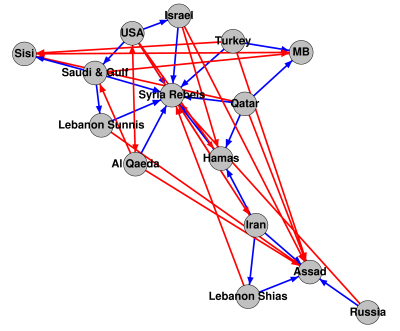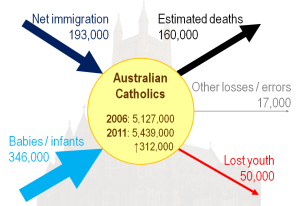
The tea
In Douglas Adams’ famous The Hitchhiker’s Guide to the Galaxy, some of the characters discuss the replacement of Arthur Dent’s brain by an electronic one:
“‘Yes, an electronic brain,’ said Frankie, ‘a simple one would suffice.’
‘A simple one!’ wailed Arthur.
‘Yeah,’ said Zaphod with a sudden evil grin, ‘you’d just have to program it to say What? and I don’t understand and Where’s the tea? – who’d know the difference?’”
But is that true? Can simple computer models adequately simulate human behaviour?
 How will a crowd of panicked humans flow down this fire escape?
How will a crowd of panicked humans flow down this fire escape?
In fact, it depends on the goal of the simulation. In models of pedestrian flow, work by Dirk Helbing and others has shown that quite simple models can perform very well, particularly in simulating evacuation dynamics and similar panic-driven scenarios. In these situations, simulations not much more sophisticated than simple fluid-dynamics models can reveal the benefits of, for example, zigzag designs for evacuation routes. See Helbing & Johansson, “Pedestrian Crowd and Evacuation Dynamics” (Encyclopedia of Complexity and Systems Science, 2009).
Adding more sophisticated decision-making allows us to build agent-based models of economic behaviour. Will people purchase a particular product from a particular vendor? Will vendors alter their prices up or down to match other vendors? Alison Heppenstall, Andrew Evans & Mark Birkin provide a nice example of such modelling, by simulating the spatial variability in petrol (gasoline) prices in “Using Hybrid Agent-Based Systems to Model Spatially-Influenced Retail Markets” (Journal of Artificial Societies and Social Simulation, 2006). Relatively simple models of behaviour also suffice for epidemiological models (which were discussed at the 2012 Workshop on Verification and Validation of Epidemiological Models in Washington D.C.).
 Anasazi ruins, Southwest USA
Anasazi ruins, Southwest USA
One of the most well known examples of agent-based modelling using this approach is the insightful study, by Robert Axtell et al., of ancient Anasazi population dynamics in the Southwest USA. In this case, behaviour in the model was synthesised from archaeological evidence, anthropological data, and rational decision-making – households will pack up and move out if they’ve seen too many bad harvests in a row. See “Population growth and collapse in a multiagent model of the Kayenta Anasazi in Long House Valley” (PNAS, 2002), and “Understanding Artificial Anasazi” (M.A. Janssen, Journal of Artificial Societies and Social Simulation, 2009).
Related modelling methods are used in studies of land use. Will farmers switch the crops they’ve been planting? Will they fell trees in the neighbouring forest? Will they abandon farming altogether and move to the city? Alex Smajgl and others discuss approaches to such modelling in “Empirical characterisation of agent behaviours in socio-ecological systems” (Environmental Modelling & Software, 2011). Grace Villamor, Meine van Noordwijk, Klaus Troitzsch & Paul Vlek, in their paper “Human decision making for empirical agent-based models: construction and validation” (International Congress on Environmental Modelling and Software, 2012), compare the strength and weaknesses of heuristic versus optimal decision-making in models. It may be difficult to accurately capture human heuristics, but it cannot necessarily be assumed that humans will always make the “best” decision.
 The emotions of fear and joy:
The emotions of fear and joy: The Rescue
by John Everett Millais
The choice between heuristic and optimal decision-making in models is complicated further when the humans being modelled make decisions on emotional grounds. Stacy Marsella and his team at the University of Southern California have had considerable success in modelling human emotion. One very successful use of their approach has been the tactical language training software marketed by Alelo, which also incorporates game technology. For details, see Johnson & Valente, “Tactical language and culture training systems: Using AI to teach foreign languages and cultures” (AI Magazine, 2009). Further development of this approach is likely to have several interesting applications.
For practical purposes, then, we can simulate human brains by electronic ones. But they will not necessarily be simple.
– A significantly expanded version of this post will appear as an article in the Summer 2013 issue of the Society for Modeling & Simulation International (SCS) Magazine.




 Posted by Tony
Posted by Tony 

















